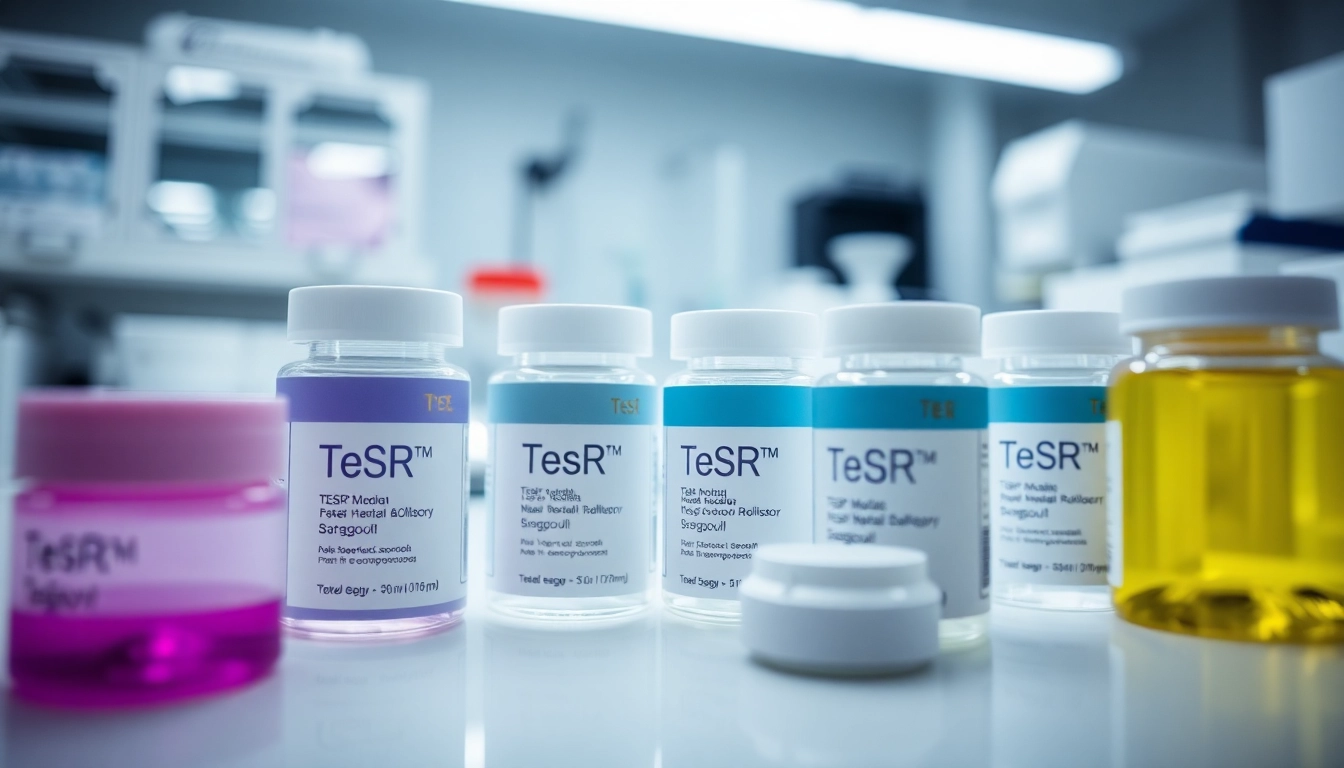Introduction to TeSR™ Feeder-Free Media
The journey of understanding human pluripotent stem cells (hPSCs) has significantly advanced with the advent of TeSR™ feeder-free culture media. TeSR™ media are not merely a product; they represent a paradigm shift in stem cell research, enabling efficient reprogramming, maintenance, and differentiation of hPSCs. With a range of formulations designed to meet diverse research needs, the TeSR™ family is crucial for scientists focused on pluripotent stem cell applications. Researchers can explore all check to find the right media tailored for their specific needs.
What is TeSR™ Media?
TeSR™ Media refers to a series of defined, feeder-free culture media developed to optimize the growth conditions of hPSCs. These media eliminate the need for external animal-derived feeder layers, which can introduce variability, lack consistency, and pose ethical concerns. Developed from the foundational work of Dr. James Thomson’s lab, TeSR™ media enable high yield and reproducible culture systems, essential for advancing stem cell research.
The Importance of Feeder-Free Culturing
Feeder-free culturing is paramount in stem cell research as it provides a controlled and standardized environment for hPSCs. This approach reduces the risk of contamination from animal-derived substances and enhances the reproducibility of experimental results. Additionally, feeder-free media allow for easier scaling and adaptation to clinical applications, potentially accelerating the transition from bench to bedside.
Overview of Available TeSR™ Products
The TeSR™ media family encompasses various formulations designed for different phases of pluripotent stem cell research:
- TeSR™-AOF: An animal origin-free media to minimize the risk of contamination.
- mTeSR™ Plus: Enhanced maintenance medium with improved buffering capacity.
- TeSR™-E8™: Low-protein maintenance medium aimed at simplifying culture processes.
- FreSR™ and mFreSR™: Cryopreservation media designed to maintain cell viability.
- ReproTeSR™: A reprogramming medium supporting fibroblast and blood cell reprogramming.
Key Components of TeSR™ Media
Cytokines and Their Functions in Cell Culture
Cytokines are pivotal in maintaining the pluripotency and self-renewal capabilities of hPSCs. They are signal molecules that influence cell behavior, ensuring optimal growth conditions. Within TeSR™ media, specific cytokines such as FGF2 and TGF-β are present, playing crucial roles in preventing differentiation while promoting cellular proliferation. Understanding the balance of these cytokines is essential for researchers aiming to maximize the efficiency of their stem cell cultures.
Stabilized Components in mTeSR™ Plus
mTeSR™ Plus contains stabilized components such as FGF2 and selectively chosen supplements to reduce media acidification during culture, promoting enhanced cellular health. This formulation is particularly advantageous for long-term culture schedules, including weekend-free cultures, as it minimizes the risk of adverse effects due to skipped media changes.
Batch-to-Batch Consistency and Its Significance
The reliability of research outcomes hinges on batch-to-batch consistency in culture media. TeSR™ media’s production adheres to stringent quality control measures, utilizing rigorously pre-screened materials to ensure reproducibility across different batches. This consistency is vital for experimental validation and robustness in scientific discoveries.
Applications of TeSR™ Media
Human Pluripotent Stem Cell (hPSC) Maintenance
One of the key applications of TeSR™ media is the maintenance of hPSCs. For researchers aiming to establish long-term cultures, the defined media provide an environment that supports cell health and pluripotency. Media such as mTeSR™ Plus facilitate extended culture periods while ensuring genomic stability and cellular integrity.
Cell Reprogramming Techniques
Reprogramming somatic cells into induced pluripotent stem cells (iPSCs) is a groundbreaking procedure that hinges on efficient protocols and reliable culture media. TeSR™ offers specialized formulations like ReproTeSR™ that enhance the reprogramming process by providing an optimal environment conducive to cellular transformation and stability.
Utilizing TeSR™ for Differentiation Protocols
TeSR™ media are also employed during differentiation protocols, helping researchers guide hPSCs toward specific cell lineages. Media like TeSR™-E6 and TeSR™-E5 are tailored for different pathways, such as neural or hematopoietic differentiation. By using these defined media, researchers can achieve reproducible and efficient differentiation outcomes, essential for potential therapeutic applications.
Success Stories and Case Studies
Interviews with Leading Researchers
Interviews with prominent scientists highlight their experiences with TeSR™ media. Dr. Joseph C. Wu discussed differentiating hPSCs into hematopoietic cells and the success achieved through optimized media conditions. Dr. Andrew Elefanty’s work on definitive endoderm differentiation exemplifies how tailored media selections have accelerated the progress of stem cell applications in regenerative medicine.
Challenges Overcome Using TeSR™ Media
Researchers have reported challenges in maintaining hPSC cultures with conventional media, often leading to variability and differentiation. Utilizing TeSR™ media has resolved these issues, enabling consistent results across experiments. Furthermore, the structured formulation of TeSR™ media has equipped laboratories to meet various research and clinical demands more effectively.
Comparative Analysis of Results
Comparative studies demonstrate the superiority of TeSR™ media over traditional culture systems. In multiple research scenarios, using TeSR™ media resulted in improved cell viability, increased proliferation rates, and enhanced differentiation potential. By fostering a supportive environment for hPSCs, TeSR™ media contribute significantly to the advancement of regenerative medicine applications and basic research in stem cell biology.
Future Directions in hPSC Research
Emerging Trends in Stem Cell Technology
The field of stem cell research is ever-evolving, with emerging trends focusing on cellular engineering and tissue regeneration. The TeSR™ media family is positioned to adapt and meet these challenges, as researchers explore novel differentiation pathways and regenerative therapies. The importance of versatile, efficient, and reliable culture media will only increase in future applications.
Innovations within the TeSR™ Media Family
Continuous innovation is a hallmark of the TeSR™ product line. With ongoing research and development, new formulated media designed to target specific applications are regularly introduced. Collaboration with leading scientists ensures that TeSR™ remains at the forefront of technology, constantly evolving based on user feedback and scientific advancements.
The Role of Regulatory Compliance in Advancements
As stem cell therapies transition from lab to clinic, adhering to regulatory compliance becomes critical. TeSR™ media undergo strict manufacturing processes that comply with cGMP standards, thereby ensuring safety and efficacy for clinical and research applications. Emphasizing regulatory compliance enhances the credibility of research findings and supports market readiness for future stem cell therapies.
